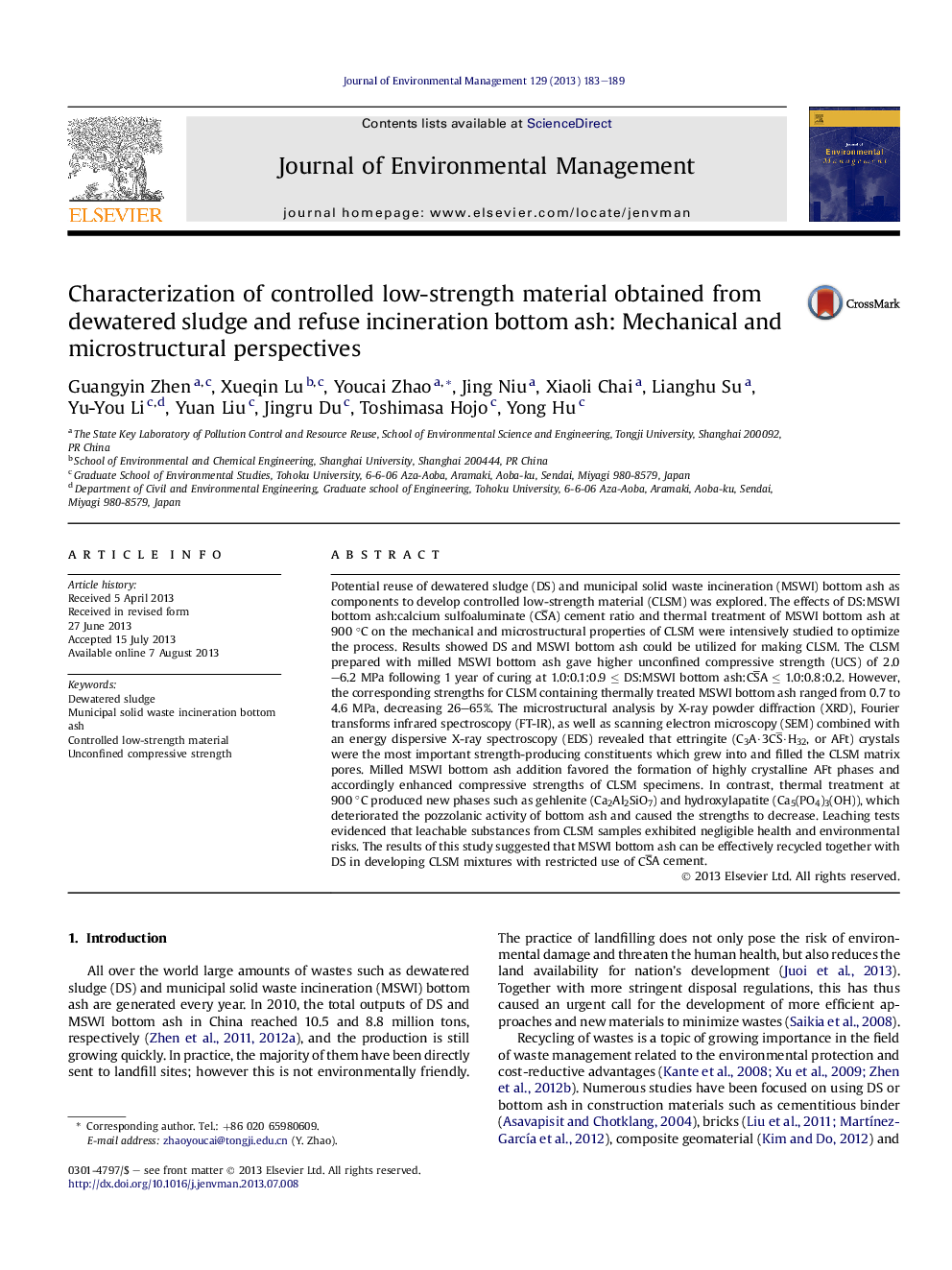| کد مقاله | کد نشریه | سال انتشار | مقاله انگلیسی | نسخه تمام متن |
|---|---|---|---|---|
| 1056159 | 1485283 | 2013 | 7 صفحه PDF | دانلود رایگان |

• Reuse potential of sludge and MSWI bottom ash in CLSM production was studied.
• Possible mechanisms in CLSM were explored from mechanical and micro-perspectives.
• Desired strength of 2.0–6.2 MPa was obtained as 1.0:0.1:0.9 ≤ DS:bottom ash:CS¯A ≤ 1.0:0.8:0.2.
• Ettringite (AFt) crystals were the most important strength-producing constituent.
• MSWI bottom ash favored the formation of AFt phases enhancing the strength.
Potential reuse of dewatered sludge (DS) and municipal solid waste incineration (MSWI) bottom ash as components to develop controlled low-strength material (CLSM) was explored. The effects of DS:MSWI bottom ash:calcium sulfoaluminate (CS¯A) cement ratio and thermal treatment of MSWI bottom ash at 900 °C on the mechanical and microstructural properties of CLSM were intensively studied to optimize the process. Results showed DS and MSWI bottom ash could be utilized for making CLSM. The CLSM prepared with milled MSWI bottom ash gave higher unconfined compressive strength (UCS) of 2.0–6.2 MPa following 1 year of curing at 1.0:0.1:0.9 ≤ DS:MSWI bottom ash:CS¯A ≤ 1.0:0.8:0.2. However, the corresponding strengths for CLSM containing thermally treated MSWI bottom ash ranged from 0.7 to 4.6 MPa, decreasing 26–65%. The microstructural analysis by X-ray powder diffraction (XRD), Fourier transforms infrared spectroscopy (FT-IR), as well as scanning electron microscopy (SEM) combined with an energy dispersive X-ray spectroscopy (EDS) revealed that ettringite (C3A·3CS¯·H32, or AFt) crystals were the most important strength-producing constituents which grew into and filled the CLSM matrix pores. Milled MSWI bottom ash addition favored the formation of highly crystalline AFt phases and accordingly enhanced compressive strengths of CLSM specimens. In contrast, thermal treatment at 900 °C produced new phases such as gehlenite (Ca2Al2SiO7) and hydroxylapatite (Ca5(PO4)3(OH)), which deteriorated the pozzolanic activity of bottom ash and caused the strengths to decrease. Leaching tests evidenced that leachable substances from CLSM samples exhibited negligible health and environmental risks. The results of this study suggested that MSWI bottom ash can be effectively recycled together with DS in developing CLSM mixtures with restricted use of CS¯A cement.
Journal: Journal of Environmental Management - Volume 129, 15 November 2013, Pages 183–189